In 2012, Seattle produced an amount of solid waste equivalent to over 3,000 blue whales.
That is a lot of whales.
Thankfully, unlike blue whales, a good portion of solid waste can be recycled. Out of the 713,803 metric tons of garbage the city produced that year, 397,837 metric tons of it—over 50 percent—was recycled by the city of Seattle.
Back in 2007, Seattle adopted a Zero Waste Resolution that sought to dramatically reduce the city’s waste. At present, the city is attempting to reach a 60 percent recycling rate by 2015 and a 70 percent rate by 2022.
While Seattle’s success is admirable compared to many other cities, Seattle University is doing even better. According to Matthew Benedict, the recycling coordinator and compost technician here at Seattle U, the school’s diversion rate—the amount of waste that is recycled or composted as opposed to trashed—is already 60 percent. Around 10 to 12 percent of this is compost and the rest is recycled material. That means that out of the 60-80 tons of solid waste the school produces, around 30 tons of it are trash.
While students may not think much about the waste they toss into one of Seattle U’s compost, recycling, and trash bins, every time they do they set off a complex chain of interactions. And where they end up at the end of that chain is very much determined by what they are, and what they can be used to make.
Jeff Meyer, who deposited some old electronics at the school’s recycling event on Tuesday, told me that he had no idea where his recycled goods would end up.
“I just thought it would be good to recycle some stuff,” he said. “I don’t know the exact place it all goes.”
This was true for a few other students I spoke to. When asked, briefly, if they knew where their trash ended up, they gave a simple reply: no.
Let’s take three different items: a paper poster with a blue whale printed on it, half of an onion, and a plastic bag that once contained half of a salmon. Through the journey of each, we can see that the issue of waste is more than a simple trip to the dump.
The Poster
Let’s start with the poster. After deciding that she has to get over her childhood love of blue whales, Stacie tosses the poster in one of the school’s 65 exterior recycling cans. From there, the poster, along with the other recycled goods in the bag, is taken to the school’s recycling center. There, it’s placed in a compactor and crushed.
Within a month or so, the compactor is picked up by Republic Services, the company currently working as the school’s recycling contractor. Republic’s trucks take the compactor and its materials to their processing facility down on 4th Avenue. There, the materials are run through a series of sorting machines and converted to raw materials.
Because Republic sells these materials as commodities, the poster could end up being used to create any number of new products. It might, for example, be sold to Nine Dragons Papers Holding Limited, a Chinese company and the largest paperboard producer in Asia. The paper would be converted to cardboard, and then used to ship a Chinese-made toy blue whale back to the United States.
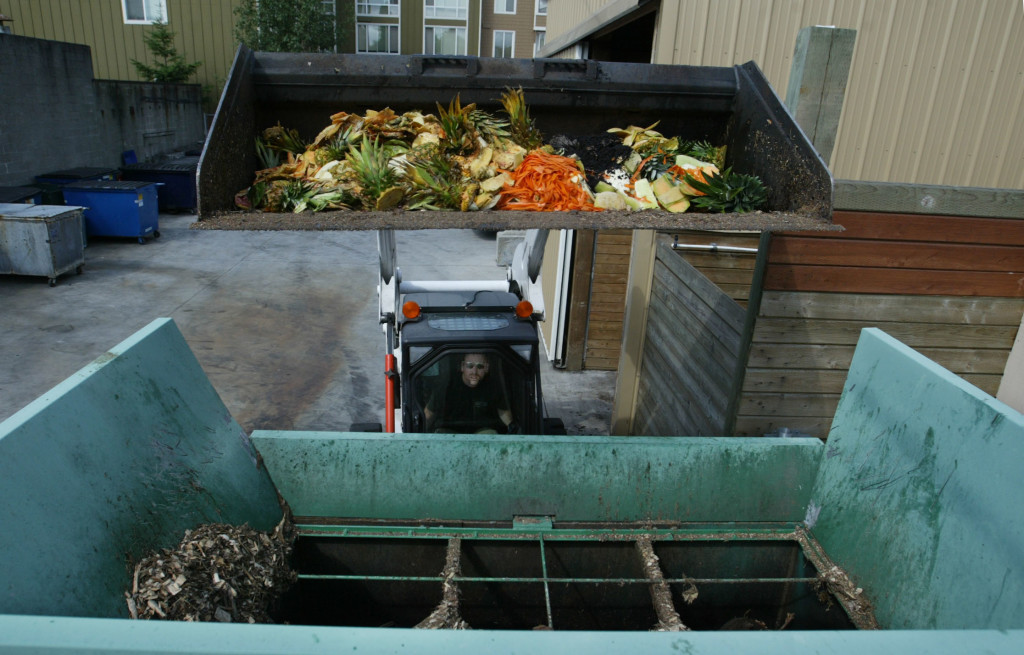
A Seattle University employee watches as a mixture of fruit, vegetable, coffee grounds and wood chips are emptied into the bucket to form compost used by the university to fertilize the campus grounds in Seattle.
The Onion
How about that half of an onion? There are two possible routes here. If the onion comes from the kitchen, then it goes to the school’s own composting center. Here, it will be placed in one of three large sheds and mixed with bark in a negatively aerated static pile. The temperature inside of this pile will reach over 100 degrees and eventually become new, fertile soil.
When it’s finished baking, the soil will be sent off for testing. When it returns—assuming it’s not full of salmonella—campus grounds will use the composted soil for landscaping. Because the sheds only produce about 15 yards of soil, Grounds has to purchase the rest elsewhere.
If the onion comes from someone’s dinner, however—post-consumer waste—it will join the rest of the university’s compost in a large dumpster. The contents of this dumpster will be collected by Cedar Grove, the school’s—as well as the City of Seattle’s—composting contractor. Processing all composting on site—apart from being too large a load for the University’s facilities—would also require further testing and permits than the school currently has.
Cedar Grove’s bright green trucks will take the food and scraps to one of the company’s locations in either Everett or Maple Valley. There, our onion will join the other 330,000 tons of other compostable material that the company processes annually.
This process creates a cycle. The wood chips removed from the compost can be used as fuel, which produces both electricity and wood ash. This wood ash can then be reintroduced into the cycle and composted again.
The onion might also be used to create composted soil, which can then be sent off to farmers who use it to create more food, which will be consumed—perhaps at a convention to save blue whales—and possibly scrapped again.
The Plastic
Which brings us to the final piece of waste: that pesky plastic bag. After being placed in a garbage can, the bag will eventually be picked up by one of the city’s contracted Waste Management garbage trucks. The truck will take it to one of the city’s two processing facilities: The North Recycling and Disposal Station in Wallingford or the South Recycling and Disposal Station in South Park. It will probably end up at the South station, since the 50-year-old northern station is closed until 2016 for renovations the city is making in order to increase efficiency.
Regardless of which facility it ends up at, though, the final resting place of that plastic bag will be the same. It’ll be loaded into a 40-foot shipping container and driven down to the railroad. There, it will be placed on a mile-long train of trash headed for Arlington, Oregon, where it will be placed in the Columbia Ridge Landfill. The landfill has facility acreage of about 12,000 acres and processes about 2 million tons of trash annually (or, 11,049 blue whales).
Strangely enough, the residents of Arlington and Gilliam county benefit, at least financially, from this arrangement. Back in the nineties, the small farming county was struggling to stay afloat,, with the number of family farms in the area reduced from 350 to 50. The county eventually agreed to having the landfill built after wrestling a number of deals—involving jobs, donations, and help with closing less effective dumps—from Waste Management. According to OregonBusiness, the landfill is currently the largest producer of revenue in the county, bringing in twice as much money as the area’s property taxes.
The trash is dumped into the landfill, and then covered with waste soil gathered from industrial sites. Methane is eventually gathered from these sites, routed to an energy generator, and used to produce electricity.
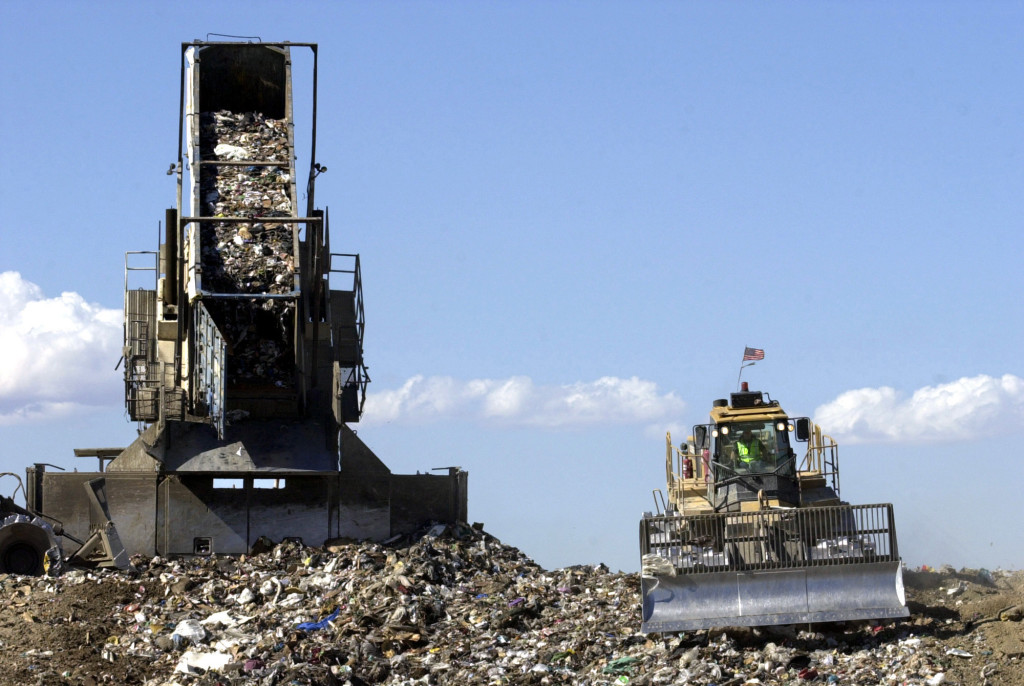
Garbage, hauled in by train and truck from long distances, is dumped from a container as a bulldozer shifts it around at the landfill, which is among the county’s biggest employers, near Arlington, Ore.
While Benedict himself would love to see the University’s waste production reach 0 percent, he thinks this is a fairly unrealistic standard.
“We’re not a closed system,” he said. “We’re an open campus. There are a lot of factors we can’t control in regards to what kind of waste gets thrown away on campus.
Aside from simply buying less stuff, students can make the largest contribution to reducing trash by simply paying attention to where they toss their junk.
In particular, Benedict said that the most productive thing that Seattle U students could do to help increase the recycling rate is the same as it’s always been: pay attention to where they put their trash. The school’s “diversion rate”, the amount of waste that is recycled and composted instead of sent to the landfill, is based on how students dispose of their trash.
“More focused education directed towards students would be helpful,” he said. “ For some [dorm] floors, diversion rates are as low as 30 percent. Part of this comes from the fact that we’re constantly dealing with new students. But I think for a lot of people they just see the trash can as the easy call: they can just throw whatever they want in there and not have to think about it.”
Sheldon may be reached at [email protected]






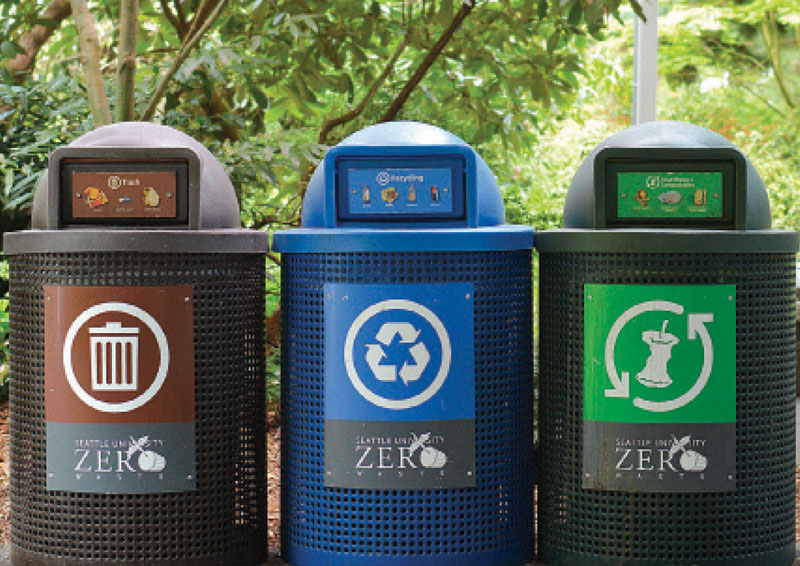


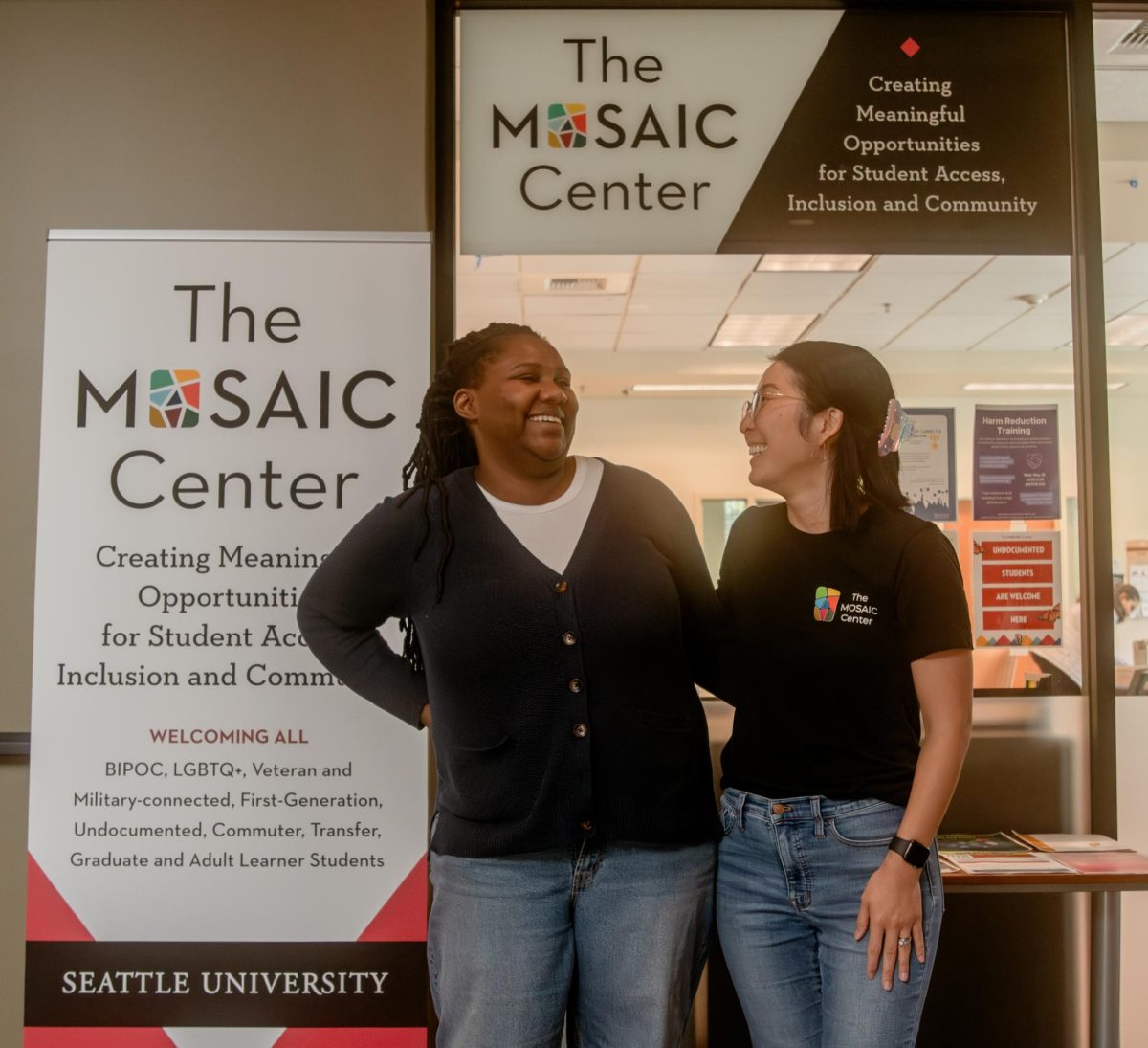
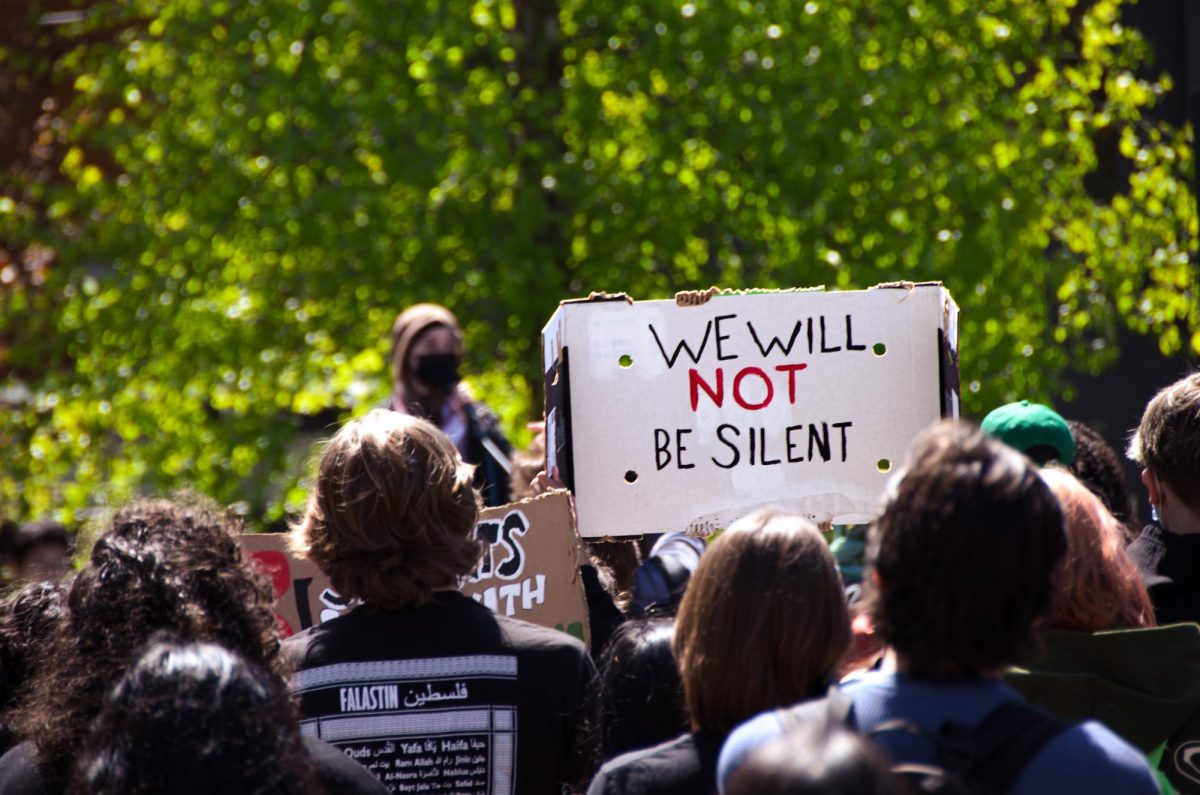


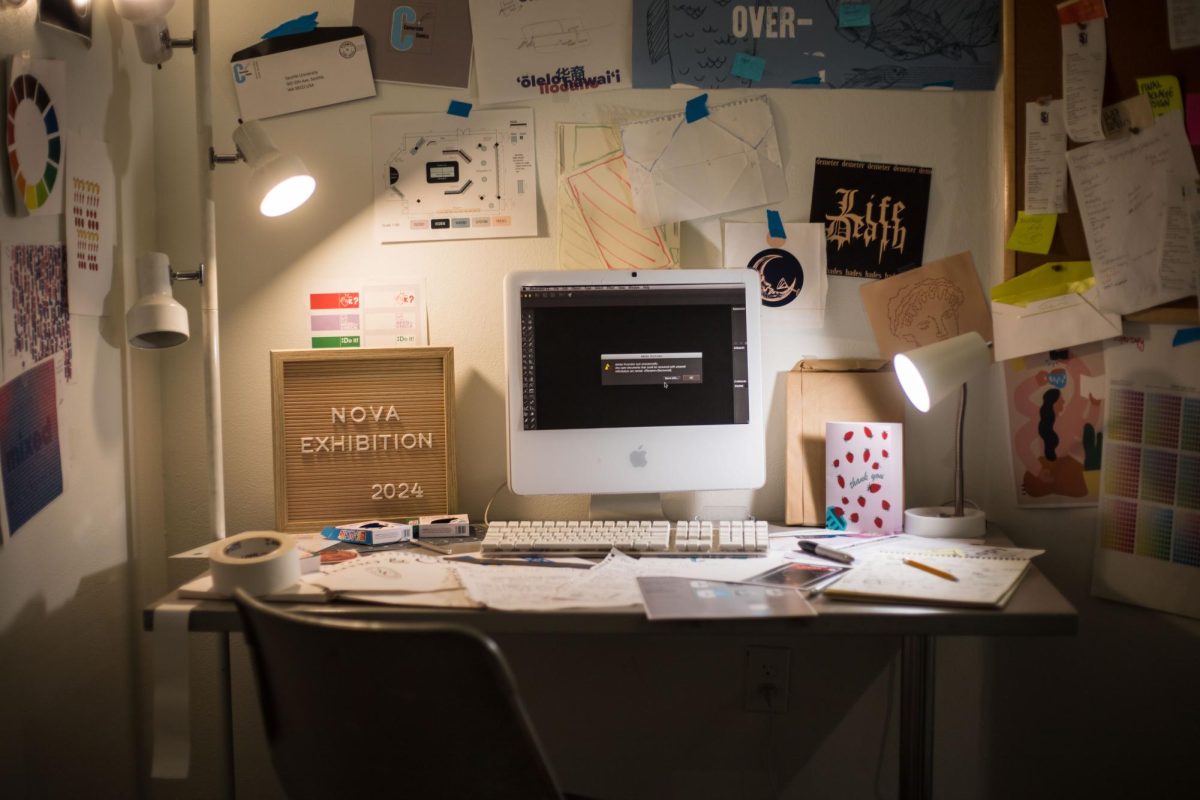
Hot GarbageMan
May 28, 2014 at 5:58 pm
Now if only we could recycle this dribble.